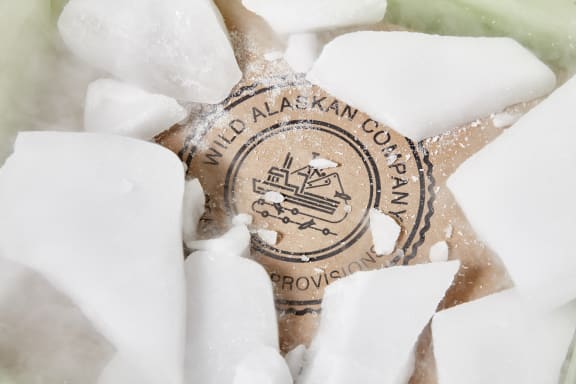If you’ve been wondering whether you can refreeze previously frozen fish, the short answer is: yes, but only when it was defrosted under certain conditions.
Refreezing thawed fish properly can be a culinary lifeline. Think of the times you had thawed seafood in your refrigerator and couldn’t use it right away. Perhaps you defrosted a couple of sockeye fillets but made other dinner plans. Or maybe you thawed more Wild Alaska Pollock portions than you needed.
We’ll get into the best way to refreeze fish, but first let’s go through some important Dos and Don’ts of the process.
Refreezing Fish After Thawing in the Refrigerator
Keep it cold! You can safely refreeze fish if it was originally thawed overnight in the fridge. Under USDA guidelines1, it’s safe to refreeze any previously frozen food that has been thawed in the refrigerator. The guidelines assume the food hasn’t spoiled before being refrozen, of course.
This principle also applies to raw fish and seafood. Did your friends take a rain check on a dinner date? Wrap those halibut steaks back up, and refreeze to use for dinner next weekend instead.
If the protein has been stored at temperatures of 40F or lower, it can be frozen again without any issues. This temperature is the food safety threshold for defrosting under refrigeration2.
Seafood that is partially thawed can be refrozen, too. Doing a second freeze can help when you want to use a smaller portion of seafood . For instance, when you crave weathervane scallops but don’t want to use an entire pack, you can split it up by partially defrosting in the refrigerator — just enough to crack apart. You can refreeze whatever you don’t plan to use.
Don’t Refreeze Fish That Has Been Quick-Thawed
Seafood that has been properly quick-thawed on the countertop should not be refrozen. In fact, you shouldn’t even put it back in the refrigerator to use for another day. Quick-thawed proteins need to be cooked promptly after they are defrosted.
There’s a good reason for this. Food should not be left out of refrigeration for more than two hours, since this exposes it to a range of temperatures that can increase your risk for foodborne illness. Once bacteria begins to form, it cannot be destroyed by refreezing the fish.
Refreezing Fish and Its Impact on Quality
So, now we know previously frozen fish, like salmon, can be refrozen after thawing, as long as it’s thawed in the refrigerator.
But let’s consider if you’d even want to refreeze fish. One thing to keep in mind is that thawing and refreezing fish can impact its quality, particularly when you’re refreezing fish in a home freezer.
Commercial freezers have the capacity to quickly freeze and refreeze seafood. When fresh fish is frozen quickly in a commercial setting, promptly after harvest, it can maintain its peak quality.
Home freezers, on the other hand, are not cold enough to limit the formation of ice crystals. The longer it takes for seafood to freeze, the more the product will suffer as a result. There will always be some loss of moisture when ice crystals form and melt, leaving the seafood a little less succulent each time. Eventually, seafood will lose its best texture and taste.
Tips to Refreeze Previously Frozen Fish
Most of us don’t have access to a commercial freezer. However, we can use some common sense measures to get our seafood to refreeze as efficiently as possible.
-
Try to refreeze your fish as soon as possible. If it’s in the refrigerator now, it’s ready to be wrapped up and refrozen.
-
The best way to refreeze seafood is to individually wrap them tightly in butcher paper, plastic, or vacuum-seal and allow them to chill in a single layer. You want there to be plenty of space surrounding the fish for cold air to circulate. After the fish has frozen completely through, you can stack and store it as you like.
-
We suggest using refrozen fish sooner than later as it’ll be more susceptible to freezer burn. This is true regardless of how well you’ve wrapped and stored it at home. If you must, you may defrost and refreeze your fish again. But in the name of good texture, mouthfeel and flavor we highly discourage this as its quality will suffer significantly.






